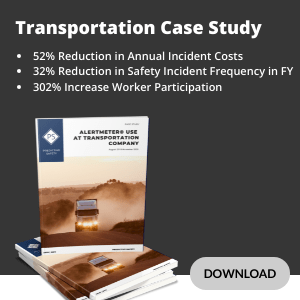Navigating Safety as a Fleet Manager
As a dedicated fleet manager, ensuring the safety and well-being of your drivers is a top priority. In this article, we will review essential safety management methods to help you cover all the bases when it comes to driver fatigue management. Your commitment to this crucial aspect of fleet operation not only ensures the safety of your drivers but also plays a significant role in the safety-conscious culture of your company
The Vital Role of Fleet Safety Management
In the realm of fleet safety management, your role holds immense importance in combating driver fatigue. Driver fatigue is a serious concern in the transportation industry, and it can lead to accidents, injuries, and even fatalities. Recent data from the National Institute for Occupational Safety and Health (NIOSH) underscores the alarming rise of fatigue-related incidents in the workplace, sounding a particularly loud alarm for fleet managers. NIOSH reports a staggering 47% increase in documented fatigue-related accidents within the transportation industry over the past five years alone. These incidents are not isolated; they have resulted in an average of 580 injuries annually, causing financial losses exceeding $45 million. Moreover, fatigue-related accidents have been linked to a concerning 31% of all workplace fatalities among drivers, emphasizing the critical need for proactive fatigue management strategies within the fleet industry. Fatigue impairs a driver's reaction time, decision-making abilities, and overall alertness, which can increase the risk of accidents on the road.
Implementing Fleet Safety Management Measures
To effectively manage driver fatigue, it's crucial to implement a comprehensive safety management strategy. Here are some key steps to consider:
Driver Safety Technologies: Embrace driver safety technology solutions like telematics systems that monitor driver behavior and hours of service (HoS). These systems can help you track your drivers' activities in real-time, ensuring compliance with regulations and promoting safety.
Pre-Shift Driver Safety Meeting: Incorporate pre-shift safety meetings into your strategy. These brief sessions focus on fatigue risks, safety guidelines, and the importance of driver alertness before each shift, fostering a positive safety culture. These are ideal times to administer a short impairment test.
Establish Clear Driver Safety Policies: Start by establishing clear safety policies and guidelines regarding driver rest hours, breaks, and maximum driving times. Ensure that your drivers are aware of these policies and adhere to them consistently.
Driver Training and Education: Provide your drivers with proper training and education on the risks of driver fatigue and the importance of rest. Encourage them to recognize the signs of fatigue and know when to take a break.
Regular Fleet Driver Health Checkups: Encourage your drivers to maintain their health through regular checkups. Fatigue can be exacerbated by underlying health issues, so addressing these proactively can make a significant difference.
Implementing Fleet Driver Alertness Tests: Consider incorporating alertness tests like the Alertmeter into your pre-shift routines. These tests gauge cognitive alertness and can help identify drivers at risk of fatigue.
Fleet Driver Fatigue Prediction: PRISM-Monitor/Workforce is an advanced fatigue tracking system that enables managers to predict and manage employee fatigue levels effectively, helping prevent potential risks. It offers personalized alerts and quantifies fatigue, making shifts safer and more productive, ultimately contributing to a safer work environment.
By diligently following these fleet safety management methods, you can significantly reduce the risk of driver fatigue-related incidents within your fleet. Your commitment to safety not only protects your drivers and assets but also contributes to a safer transportation industry as a whole.
In conclusion, as fleet managers, you have the responsibility to ensure that your drivers are well-rested and alert while on the road. By implementing comprehensive safety measures and staying informed about the latest advancements in fatigue management, you can make a positive impact on the safety of your fleet and the entire community of drivers.
Additional Fleet Safety Resources
Mastering Fleet Safety: Proactive Safety Systems
Driver Fatigue Prediction, Monitoring & Impairment Detection Fleet Safety Software
7 Best Fleet Safety Program Technologies
Driver Safety Technology's Role in Managing Fleets




